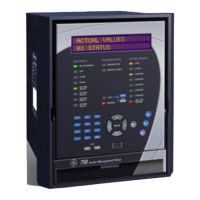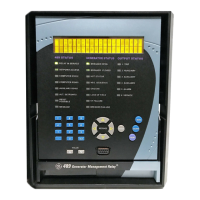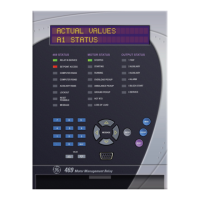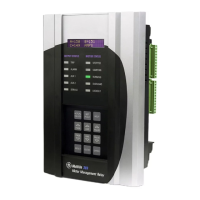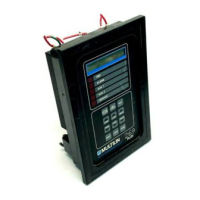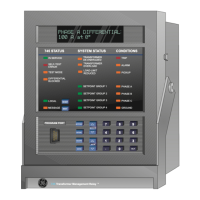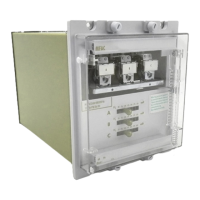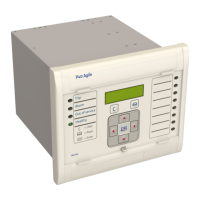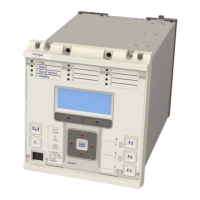Metering745
Transformer Management Relay
Commissioning
http://www.GEindustrial.com/multilin
7–6
GE Multilin
1. Prior to energizing any of the Logic Inputs, ensure that doing so will not cause a
relay trip signal to be issued beyond the blocking switches. These should have
been opened prior to starting on these tests. If you wish, you can disable the
Logic Input functions by setting:
S3 LOGIC INPUTS !" LOGIC INPUT 1 (16) !" LOGIC INPUT 1(16) FUNCTION: “Disabled”
2. Connect a switch between Logic Input 1 (Terminal D1) and +32 V DC (Terminal
D12), as shown above (alternatively, use the wet contact approach shown in the
same figure). Logic Inputs can be asserted with either an opened or closed
contact, per the user choice. Verify/set the type of Logic Input to be used with
the following setpoint:
S3 LOGIC INPUTS !" LOGIC INPUTS !" LOGIC INPUT 1 (16) / INPUT 1(16) ASSERTED STATE
3. Display the status of the Logic Input using the
A1 STATUS !" LOGIC INPUTS !"
LOGIC INPUT 1(16) STATE actual value.
4. With the switch contact open (or closed), check that the input state is detected
and displayed as “Not Asserted”.
5. Close (open) the switch contacts. Check that the input state is detected and
displayed as “Asserted”.
6. Repeat for all the relay logic inputs which are used in your application.
Output Relays 1. To verify the proper functioning of the output relays, enable the Force Output
Relays function by setting:
S6 TESTING ! OUTPUT RELAYS ! FORCE OUTPUT RELAYS FUNCTION: “Enabled”
The Test Mode LED on the front of the relay will come ON, indicating that the
relay is in test mode and no longer in service. In test mode all output relays can
be controlled manually.
2. Under
S6 TESTING !" OUTPUT RELAYS set the FORCE OUTPUT 1 to FORCE OUTPUT 8
setpoints to “De-energized”.
3. Using a multimeter, check that all outputs are de-energized. For outputs 2 to 5,
the outputs are dry N.O. contacts and for Outputs 6 to 8, the outputs are throw-
over contacts (form C). Output 1 is a solid state output. When de-energized, the
resistance across E1 and F1 will be greater than 2 MΩ; when energized, and
with the multimeter positive lead on E1, the resistance will be 20 to 30 kΩ.
4. Now change the
FORCE OUTPUT 1 to FORCE OUTPUT 8 setpoints to “Energized”.
5. Using a multimeter, check that all outputs are now energized.
6. Now return all output forcing to “De-energized” and disable the relay forcing
function by setting
S6 TESTING ! OUTPUT RELAYS ! FORCE OUTPUT RELAYS FUNCTION
to “Disabled”
7. All the output relays should reset.
Metering
Description Accuracy of readings taken in this section should be compared with the specified
accuracies in Specifications on page 2–4. If the measurements obtained during this
commissioning procedure are ‘out-of-specification’ verify your instrumentation
accuracy. If the errors are truly in the relay, advise the company representative.
Current Inputs The general approach used to verify the AC current inputs is to supply rated
currents in all the input CTs. Displayed readings will then confirm that the relay is
correctly measuring all the inputs and performing the correct calculations to derive
sequence components, loading values, etc. Since the displayed values are high-side
values, you can use this test to verify that the CT ratios have been correctly
entered.
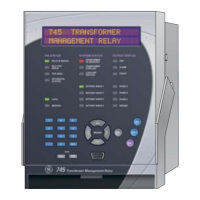
